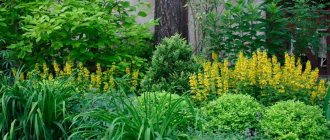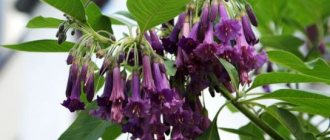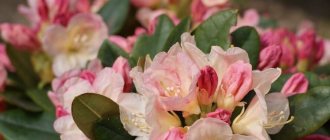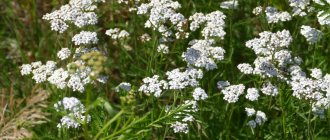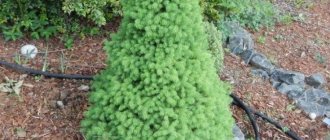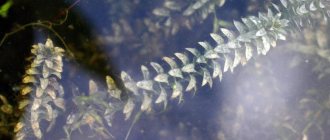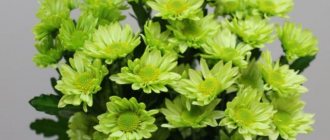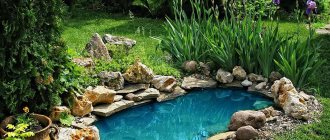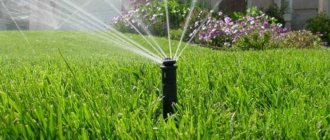The nature of our planet is extremely diverse. Every continent, part of the world, country, region, region and city can boast of beautiful representatives of the flora, which not only decorate the entire surrounding space, but also help purify the air.
Various forms of plant life, including wild shrubs, play an important role in nature and human life. These are the ones that will be discussed in the article.
Wild plants
It is customary to call those plants that live in natural conditions and are not grown by humans. They inhabit fields and meadows, steppes and savannas, deserts and forests. This includes:
- shrubs;
- vines;
- trees;
- shrubs;
- herbs;
- palms.
- shrubs;
That is, all existing life forms of plants. In particular, wild shrubs make up a large part of the understory, groves, edges of meadows and fields, roadsides and urban landscapes. It is these forms that are used to create hedges in front of residential buildings, retail outlets and other structures.
Wild trees, shrubs, and grasses are an integral part of Russian nature. It is they who, when entering our country, talk about its beauty, greatness and splendor.
Shrubs of Russia
The wild shrubs of our region are distinguished by a wide variety of species. They are distributed in all stripes and latitudes, forming deciduous and partially coniferous forests, linear hills and mountain ranges. There are also many representatives among them that people use for decorative purposes in their gardens. Some types of berries are actively consumed as food and are valued for their vitamin components. Wild shrubs in Russia also have medicinal forms.
The most common species growing in nature:
- Daphne;
- common raspberry;
- spirea;
- viburnum;
- caragana tree;
- Russian Hungarian;
- common core;
- rose hip;
- common honeysuckle;
- hawthorn;
- snowberry;
- mock orange and others.
- urinary worm;
- Chinese lemongrass;
- euonymus warty;
- common barberry;
- swamp rosemary;
- lilac;
- black cotoneaster;
- cranberry;
The wild shrubs of our region are very beautiful, different in their role in nature and in their significance for humans. There are a number of such species that people try to plant and propagate on their land for different purposes: decorative, nutritional, landscape. These representatives include the following wild trees and shrubs: cherry, blueberry, apple tree, ash, rose hip, thuja, pine, spruce, currant, plum, lilac, rowan, broom, nightshade, alder, sea buckthorn, juniper, raspberry, pear, hazel, viburnum, barberry, grapes, lime, lemongrass, gooseberry, sea buckthorn, maple, honeysuckle, oak and others.
What have we learned?
Shrubs are common in almost all natural areas. There are wild shrubs and cultivated ones that produce berries, fruits or decorate the garden. In a report for 2nd grade children studying the world around them, you can talk about the classification of shrubs, giving the example of Schisandra chinensis.
Previous
The world around us What birds fly south? – listing migratory birds for children (2nd grade, the world around us)
Next
The world around us Signs of insects - the main main distinctive ones briefly for a report on the topic (grades 2-3, the world around us)
Rose hip
Perhaps one of the most valuable shrubs, both wild and cultivated. The height of the plant is up to 2 m, the branches are red-brown, shiny, covered with curved thorns. The flowers are pink and bright. This plant belongs to the Rosaceae family. The leaves are round, collected in several pieces on the petiole. The edge is finely trimmed. Rose hips are bright orange, elliptical or round in shape.
This plant has long been considered a healing source of important substances and vitamins. Avicenna also called rose hips a cure for liver diseases. Today this plant is valued not only for its medicinal properties, but also for its beautiful appearance and unpretentiousness to living conditions. Delicate crimson roses will not leave anyone indifferent. Flowering continues from mid-May to the end of June.
All parts of the plant are used to make medicines, with the exception of the leaves: fruits, roots, stems and flowers. The most valuable substances in the plant are carotenoids, vitamins B and PP, flavonoids, organic acids, and essential oils.
general information
Spring vitamin greens are always good for any feast. It helps to improve the health of the body, adds vigor and strength. Therefore, many housewives do not refuse to use wild edible herbs.
Below are some of the most common and most famous photos of edible herbs and their descriptions.
There is a special day in the folk calendar called Mavra - May 16 of the new style. On this day, in the old days, a dish appeared on the tables of peasants (and gentlemen) that was prepared from fresh green forest and meadow herbs. And it was very appetizing.
And in the ancient Russian “Izbornik of Svyatoslav” (a written monument of the 11th century) it says: “There is great power in a vegetable.” This means not only garden greens (there were few of them at that time), but also greens growing in the wild.
Edible wild plants and herbs are more beneficial. Below we will present some types of “pasture” that have a large number of different vitamins, minerals and other useful substances.
Spirea
Wild shrubs of the genus Spirea number about 90 species. Some of them have been cultivated by people for a long time and are widely used for landscaping.
This plant is 2 meters tall or more. The color of flowers, leaves, their shape and size - it all depends on the specific species. The most common forms of flowers are white or pink, less often with a purple corolla.
The most common types of middle spirea in nature in Russia are beautiful wild shrubs, photos of which can be seen below.
The following representatives are also very popular:
- Oak leaves.
- Argon.
- Japanese.
- Thunberg.
- Gorodchaty.
- Grey.
- Wangutta.
- Japan.
Spectacular bushes strewn with fragrant and bright inflorescences can leave few people indifferent, this explains the popularity of the plant. It has virtually no medicinal value.
Union of "savages"
Do you like this initiative and would you like to organize an amazing green kingdom for feathered friends and animals in your own garden? When planning a free-growing hedge, keep in mind that birds and many animals have nothing against wild shrubs from distant lands. But we cannot do without “characters” traditional for our latitudes, because on average 21 species of birds feed on the fruits of local plants, and only 4 on overseas delicacies. The situation is similar with the preferences of animals. On the other hand, the choice of native ornamental shrubs with compact sizes is quite limited.
The conclusion is simple: the optimal solution will be a combination of our flora representatives and “foreigners”.
Viburnum (Viburnum opulus) 'Compactum', honeysuckle (Lonicera xylosteum) and black honeysuckle (Lonicera nigra), red chokeberry (Aronia arbutifolia) and chokeberry (Aronia melanocarpa), as well as local rose hips can boast relatively small dimensions.
To make a hedge of wild shrubs bloom longer , complement the “green wall” with plants of remontant varieties with simple flowers. A nice bonus: rose hips and the fruits of other wild plants can also be used in the kitchen. And some, such as serviceberry, have fruits so tasty and juicy that they can be eaten straight from the bush.
Red chokeberry (Aronia arbutifolia) is a wild shrub native to North America. Red edible fruits appear after white flowers, which attract bees to the garden.
Chokeberry usually grows in our gardens . It reaches 1.5 m in height, that is, half a meter more than its red-fruited sister, and its harvest is more abundant.
Shrubs of the Moscow region: names
This group includes not only domesticated cultivated plants. Wild shrubs of the Moscow region also widely inhabit local biotopes. The most common of the cultural forms that fill summer cottages and vegetable gardens are fruit and berry species.
- Grapes of different varieties.
- Assorted quinces and plums.
- Blueberry.
- Honeysuckle.
- Gooseberry.
- Raspberries.
- Rowan.
- Currant.
- Yoshta.
- Blue raspberry.
Among the wild organisms of this group one can distinguish euonymus, wolfberries, male dogwood, chewing gum, maple, lilac, middendorf weigela, elderberry, broom, dogwood, rhododendron, forsythia, sucker, peony, rowan, roses, almonds, hawthorn, willow, barberry and other.
Most names are generic. This means that each plant has a different number of varieties. Therefore, the total number of forms of shrubs in the Moscow region is quite significant. This is of great benefit, as plants purify and renew the air and help normalize its composition.
European euonymus
Both wild and cultivated shrub plant. In some regions of our country it is grown as an industrial plant, since the roots of the euonymus contain gutta-percha.
Such wild shrubs reach 3 meters in height and above. The leaves are quite large (up to 10 cm), oval in shape. The flowers gather in inflorescences and then become clearly visible. Corolla pink-white. After flowering, red or dark pink fruits are formed. They are poisonous, but are used as medicine.
The decorative value of euonymus lies in its fruits and beautiful dense leaves. It is good for constructing spectacular hedges, which is why it is used in landscape design.
Lesser periwinkle and hawthorn
Periwinkle is an evergreen shrub that has a huge rhizome that grows deep underground in a horizontal direction. April and May are the most favorable months for its flowering. The fruits can reach about five centimeters in size, and they ripen only in October. The plant contains many alkaloids, the herb and foliage are very useful in treating various diseases in the body.
People consider such a bush to be one of the symbols of true love of both halves. In order to make the girl understand that feelings are true and true, young people often gave bouquets of flowers, which included periwinkle. It was always grown in their gardens. There is a wedding tradition in which it is customary for the bride to pick some flowers from a bush in the morning before the wedding.
Periwinkle also took part in rituals to cast a love spell on a loved one. They made wreaths from it, and later they lowered it downstream and observed: the man who catches it is the girl’s betrothed. And if no one took it, then the girl will have to spend a long time alone.
It is also generally accepted that such a bush can protect against evil spirits and dark forces. And next to the animals they lit a fire from dry bushes so that they could inhale the smoke. It was believed that this is how they save their animals from the evil eye of envious people.
The children were told various stories related to periwinkle. For example, in order for a witch to call the right person, she had to pick a fresh bush in the morning, carefully cut off the roots and brew it in boiling water, pronouncing the name of the person she needed. After which evil dark forces rose and called him to her. In order to gain her strength to fly, she first bathed in the juice from the periwinkle bush.
There is also a tradition that before starting to build a house for a young couple, the wife needs to weave a beautiful wreath. The husband put it in the place where the building would later stand. In this case, construction should begin only when the wreath has completely withered.
If an unmarried girl or man suddenly died, then it is necessary to place a bouquet of these flowers in the coffin. And the children put a wreath on their heads.
In folk medicine, the culture is also actively used, especially for severe bleeding.
To do this, take two tablespoons of dry periwinkle leaves, add two glasses of water, and then simmer over low heat for about one hour. At room temperature, let it brew for about two hours, after which three sips are taken throughout the day. Hawthorn is a shrub that can reach 3-4 meters in height.
The branched part has a very spiny base, the leaves are located on short petioles. White flowers can sometimes be found with a yellowish tint; they are collected in small inflorescences and have a repulsive odor. The fruits are spherical, tasty and red in color. The main time for flowering is May. The culture contains many different compounds that are very beneficial for the human body; it also contains starch and sugar. Flowers and fruits of the bush are used for medicine. They normalize a person’s increased excitability, improve their condition and completely relieve insomnia. Hawthorn is used as a tincture to cope with sunburn on the body. It is also effective against premature aging of the skin and is used to normalize the body's cardiovascular system. Basically, hawthorn is classified as the best medicine for heart diseases.
The culture is often used for gastritis. To do this, take some fruits of the bush and eat them together with liquid, which helps better absorption. For hypertension, you can use berries, which must first be peeled from the top layer, then pour a liter of hot water and let it brew all night; the next morning after waking up, you need to drink everything on an empty stomach.
If you suddenly have heart problems, you can also use hawthorn berries. To do this, just take a few spoons of berries and squeeze the juice out of them and drink throughout the day. You can make decoctions using the fruits of the bush. To do this, you need to take the berries and pour boiled water over them, add honey and consume for one day. This is quite enough to cope with the pain in the heart.
Shrubs, in addition to their beauty when flowering, can also provide many beneficial properties for the human body.
In ancient times, they were considered divine gifts, since with their help people were saved from many diseases.
It was also believed that humans, trees and shrubs are closely related to each other. Before fighting in battle, it was customary for a warrior to approach the oak and viburnum trees. They believed that oak gave more strength, and viburnum would strengthen spiritual masculinity, and the warrior’s hand would not waver in battle. If a woman cannot get pregnant for a long time, then she needs to plant blueberries in her garden. When the first fruits appear, she should be the first to taste them, and the conception that she and her husband have been waiting for for a long time will occur.
Daphne
Low plants, up to 1.5 meters high. Distributed in Siberia, in the west and east. Such wild shrubs bear very colorful fruits. From them the plants got their name. This is a juicy, bright red drupe that looks like a berry. However, you cannot eat them, since there are not many of them, but they are poisonous.
The flowers are pale pink, sessile. They exude a very pleasant aroma due to the essential oils they contain, so they attract many insects. The leaves of the she-wolf are medium-sized, round or slightly pointed, pubescent.
The berries of this plant and parts of the bark are used in medicine. The main diseases for which wolfberry preparations help are gout, rheumatism, and paralysis.
Sorrel
In green meadows you can often find sour sorrel, which is also grown in gardens.
Fresh leaves are very good for cabbage soup and other soups. They can also be used in making sauces. This plant well compensates for the lack of spinach, which is rarely grown in the garden. Young shoots of sorrel are especially tasty.
The plant contains large quantities of proteins, sugars and minerals. The characteristic pleasant taste of the wild vegetable is given by oxalate salt, contained in the tender stem and leaves.
The harvesting period for sorrel is short, so it is immediately collected in large quantities and pickled like cabbage in a tub, after having been cleaned and washed. It is prepared for the winter both in the form of a puree (passed through a meat grinder and mixed with salt) and in a dried state.
It is also worth mentioning the sorrel's brothers: small and horse sorrel. The less sour sorrel is squat, its stems are tough, and its leaves look like spears. Horse sorrel is best known as a medicinal plant. Young leaves of the latter can be added to various flour products.
Wild shrubs of the Urals
The flora of the Urals, Urals, Siberia and the Far East is very similar in the species composition of shrub forms. Consequently, species such as quince, barberry, elderberry, weigela, wolfberry, turf, gorse, honeysuckle, willow and other plants are common in these areas.
All of them form the general appearance of the nature of fields and meadows, forests. Plants such as shrubs and wild trees make the natural habitats of animals and people complete, rich, beautiful and varied.
We can briefly list those Ural species that are basic for these places. These are wild shrubs whose names are given below.
- Kalina.
- Various types of cotoneaster.
- Clematis.
- Siberian prince.
- Silver goof.
- Mahonia is a holly tree.
- Fragrant raspberry.
- Nightshade is bittersweet.
- Russian broom.
- Different types of rhododendrons.
- Roses of all kinds.
- Spirea.
- Lilac.
- Chubushnik and others.
This is, of course, not a complete list, but it includes the most common Ural species. Most of them are a source of food for forest animals and humans. In addition, there are many medicinal forms of plants.
Classification by life forms
Any plant species has many life forms and classifications in which they are described. But in our time, the lists of Serebryakov and Raunkier are considered the best and most recognized. Both scientists agreed that there are five main forms in the world, and all the rest are derivatives:
- Therophytes are plants without buds. They begin to wither and die towards the end of the flowering season. (Poppy seed, buckwheat, chamomile, etc.)
- Cryptophytes are shoots whose buds are located at a fairly large depth. (Potatoes, water lilies, lilies of the valley, tulips, etc.)
- Hemicryptophytes - the depth of the buds is shallow, usually equal to the ground or slightly lower. (Strawberries, dandelions, periwinkles, etc.)
- Chamephytes - the roots of these plants and their buds are located just above the ground and do not go deep. In winter they are covered with a small layer of snow. (Cranberries, lingonberries, blueberries, etc.)
- Phanerophytes - this form mainly includes trees, their buds are located high above the ground.
Thistle
Barberry
The most common type of this shrub in the Urals is common barberry. Plant height is up to 2 meters. The stems are abundantly equipped with thorns, the leaves are tightly intertwined with the branches, and have a beautiful dark purple color. This creates a very striking contrast with the yellow-orange flowers and bright red fruits. Therefore, barberry is easily used by people as a garden shrub.
The berries are edible and very healthy. Used for medicinal purposes. During flowering, the common barberry emits a very pleasant aroma and attracts many insects. It is often used for hedges. Resistant to frost, but easily affected by parasites and fungi.
Nettle
You can often find this edible herb in the garden. This plant is known to everyone, because it lives everywhere. Nettle is one of the first to appear in the spring after the soil warms up.
This plant loves fertilized (manured) soils.
Only the freshest spring nettle greens should be collected for consumption. It is used for preparing borscht, cabbage soup and making fillings for pies. Older leaves can be pickled for future use, like cabbage.
Russian peasants, when there was an acute shortage of food, even added dry ground herbs to flour for baking bread, and sprinkled the seeds into potatoes and cereals.
In the richest pantry of nature there are not very many edible wild herbs that have such value as nettles. Thirty grams of its greens provide a person with vitamin C and carotene for the whole day.
Nettle is beneficial for both people and pets. Nettle leaves are also used for other purposes - they are an excellent raw material for the production of green paint. Harvesting is usually done when the plant is flowering.
Cotoneaster brilliant
A widespread plant in the Urals. It is often found both in nature and in gardens and summer cottages. It gained such fame for its attractive appearance - tall bushes (up to 3 meters) with an enlarged, interesting crown in the shape of leaves.
The main advantage is frost resistance and drought resistance. Shiny cotoneaster gets its name from the corresponding surface of the leaves. The flowers are collected in small white or pink inflorescences. The fruits are bright red, non-poisonous. They are a source of food for many birds and animals.
For decorative purposes, cotoneasters are used to create hedges with beautiful clusters of hanging fruit, black or red.
Schisandra chinensis
Distributed in China, Korea, Japan, Russia, Primorye, Sakhalin and the Kuril Islands. Prefers valleys of mountain rivers, found in coniferous-deciduous forests. It is cultivated in gardens up to and including the Sverdlovsk region. It is not damaged in frosts down to –35 °C; in strong winds it can withstand temperatures down to –25 °C.
The liana reaches a length of 10–15 m, in cold regions it grows no more than 4 m. It reproduces by root suckers or rooted shoots. Blooms in early summer for about 2 weeks. Clusters of red berries hang on the vine until frost, but can be eaten by birds.
In medicine it is used as a general tonic.
Rice. 3. Chinese lemongrass.
Common lilac
This plant is just one of many species belonging to the general genus Lilac of the Olive family. This shrub is known not only in the Urals, but also throughout almost the entire territory of our country.
Beautiful fragrant inflorescences, consisting of many clusters of small delicate flowers, attract not only pollinating insects, but also animals, birds and people. The color of the corollas varies: from snow-white to lilac-pink. Used for decorative and medicinal purposes.
Deciduous plantings
Deciduous shrubs look very natural and organic in city parks and country groves. Some of them are known to everyone and are familiar from childhood. Among such plantings are:
Barberry. It has a beautiful green crown, yellow inflorescences from which berries appear.- Kalina. The plant is often confused with maple due to the similarity of the leaves. Viburnum berries have medicinal properties and are used in medicine.
- Lilac. For residents of central Russia, this shrub is the personification of the coming summer. The succulent foliage remains on it until frost.
- Raspberry. This is not only a beautiful plant, but also beneficial for human health. Raspberries have antiseptic and anti-inflammatory properties and are very tasty fresh, canned or even frozen.
Fruit trees are planted not only for beauty. The fruits collected from them are loved by adults and children. Many wild fruit bushes cope well with all these tasks.
